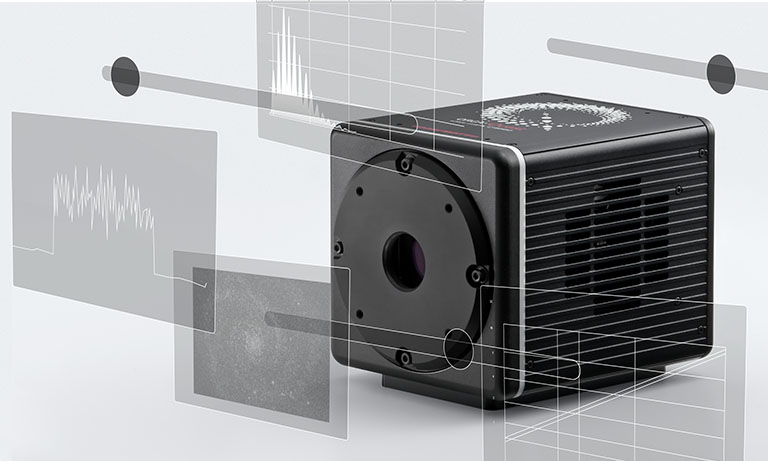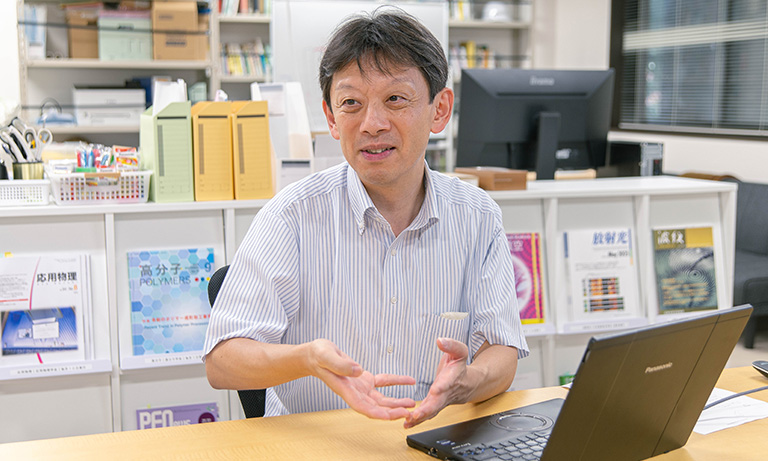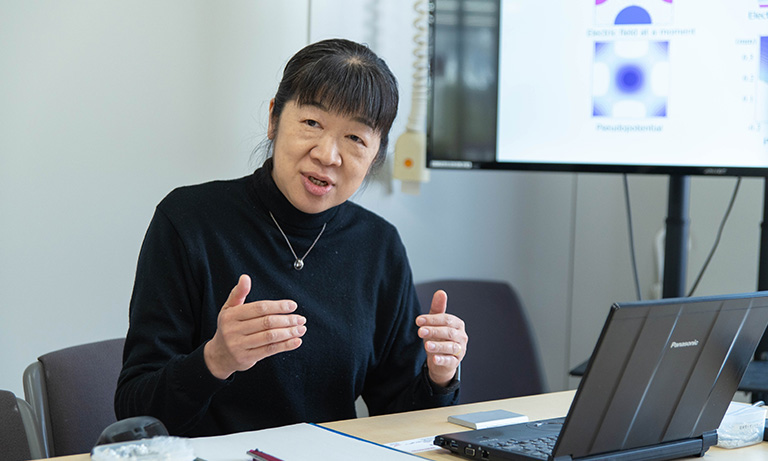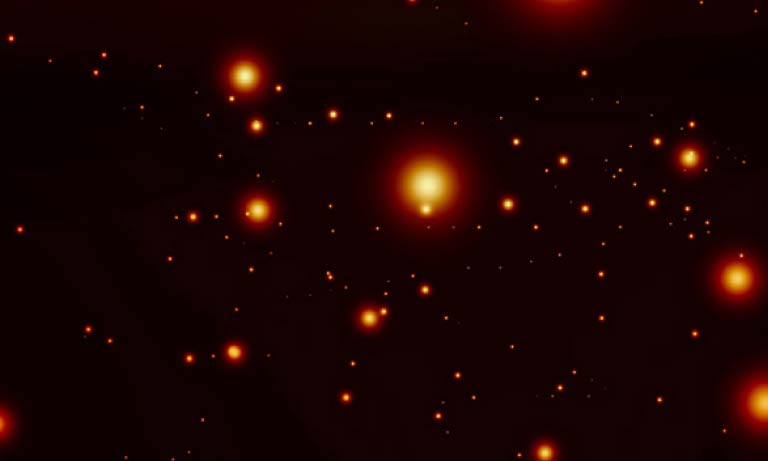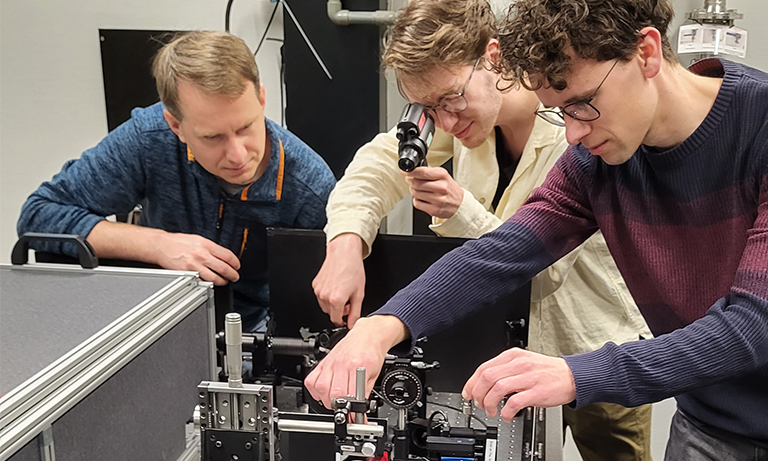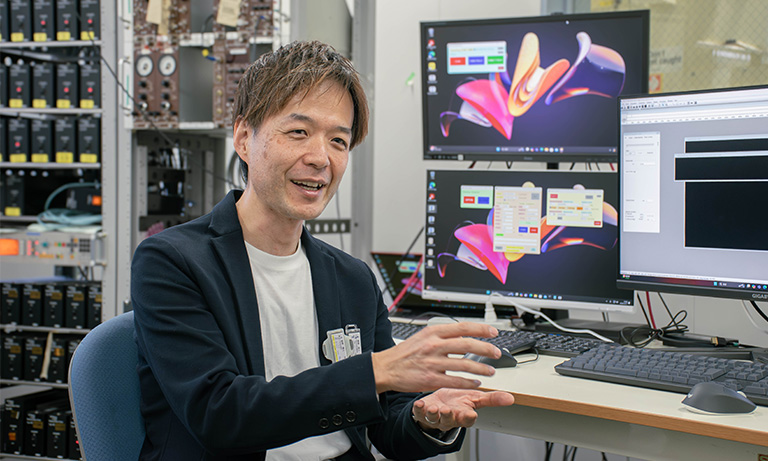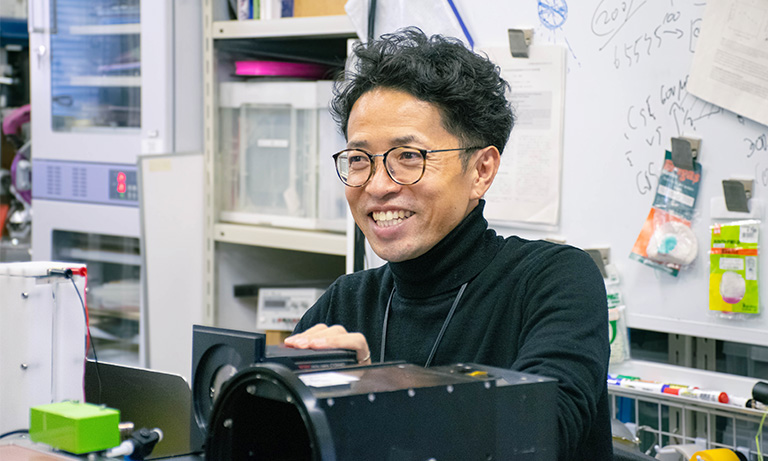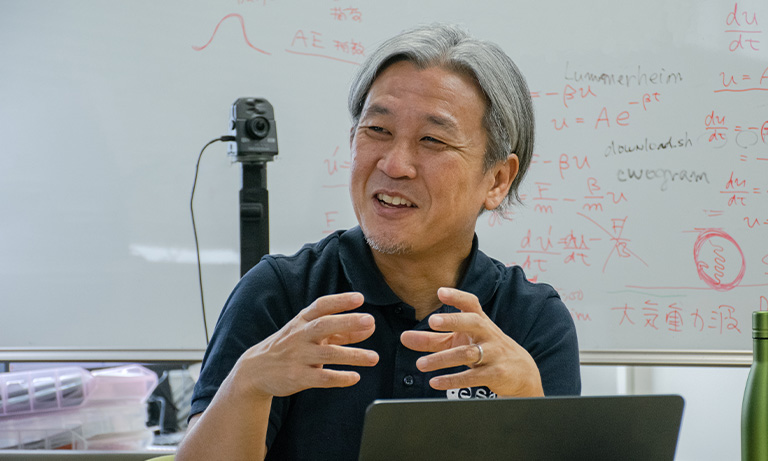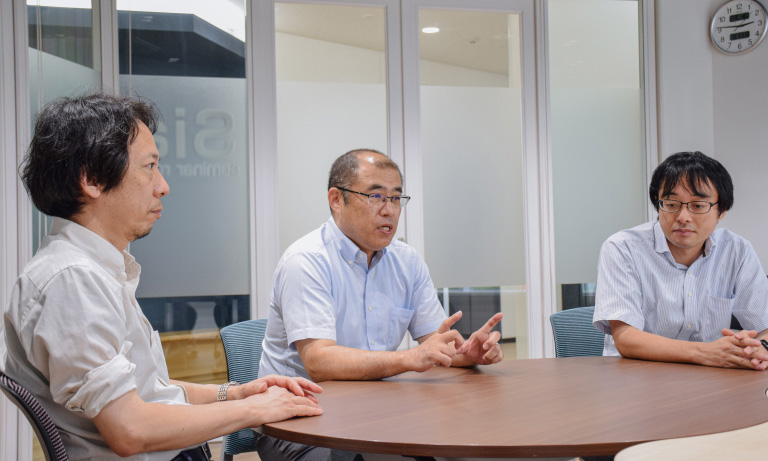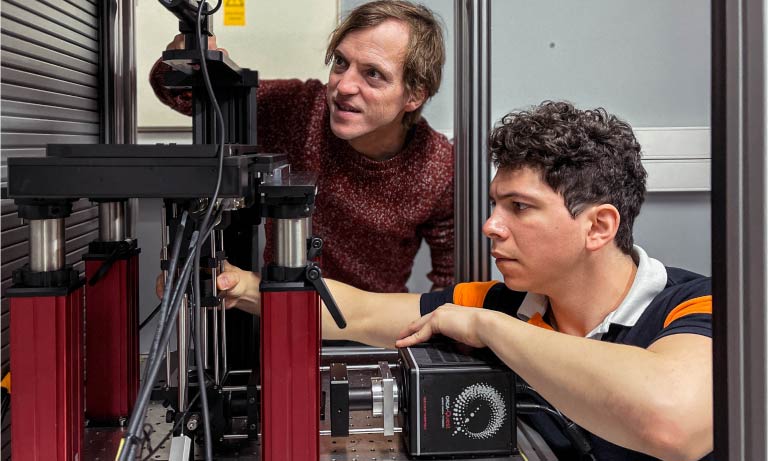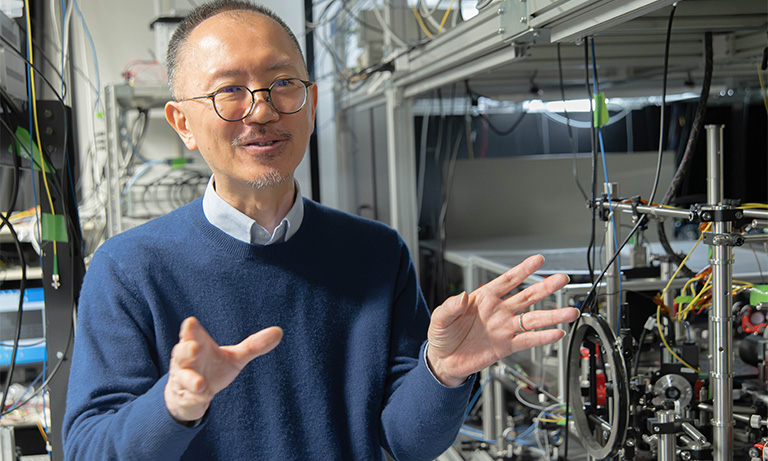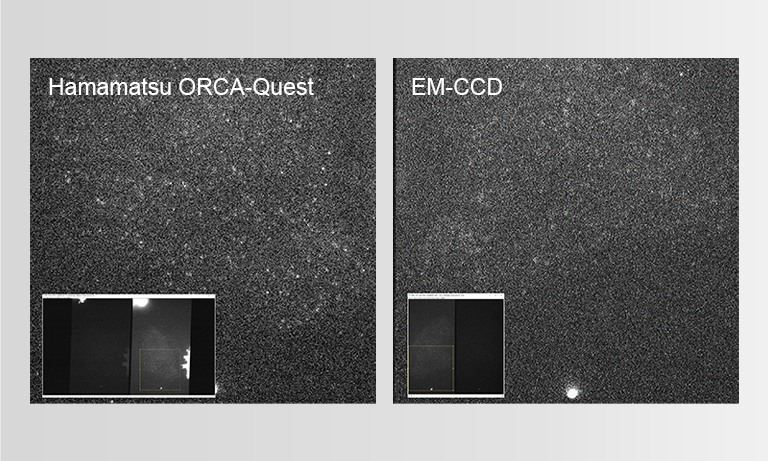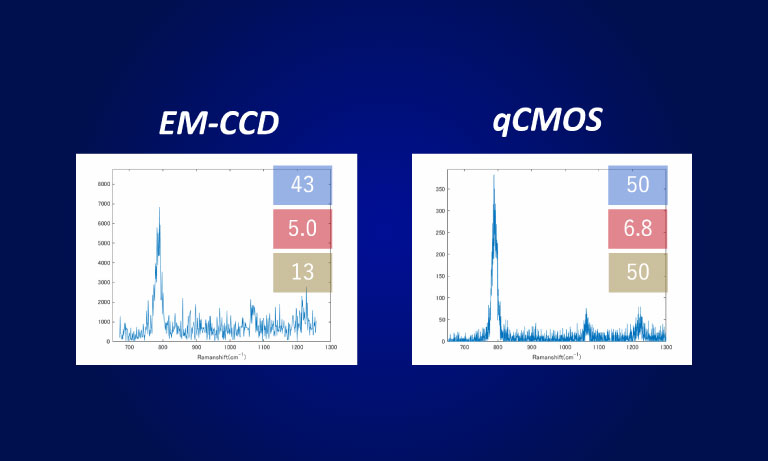Japan (EN)
Select your region or country.
A giant telescope for giant discoveries
Published on June 11, 2025
Standing tall at 10.4 meters, the Gran Telescopio Canarias (GTC) is the largest and one of the most advanced telescopes in the world. Gathering precious information about our universe, this major reflecting telescope in La Palma, Spain, is built using a combination of curved, thin, and lightweight mirrors. Through their smooth and perfect surface, these mirrors can collect and focus light toward the image plane. However, the pursuit of clarity and precision in its observations demands meticulous attention to detail, as even the slightest imperfection can compromise the brilliance of its findings.
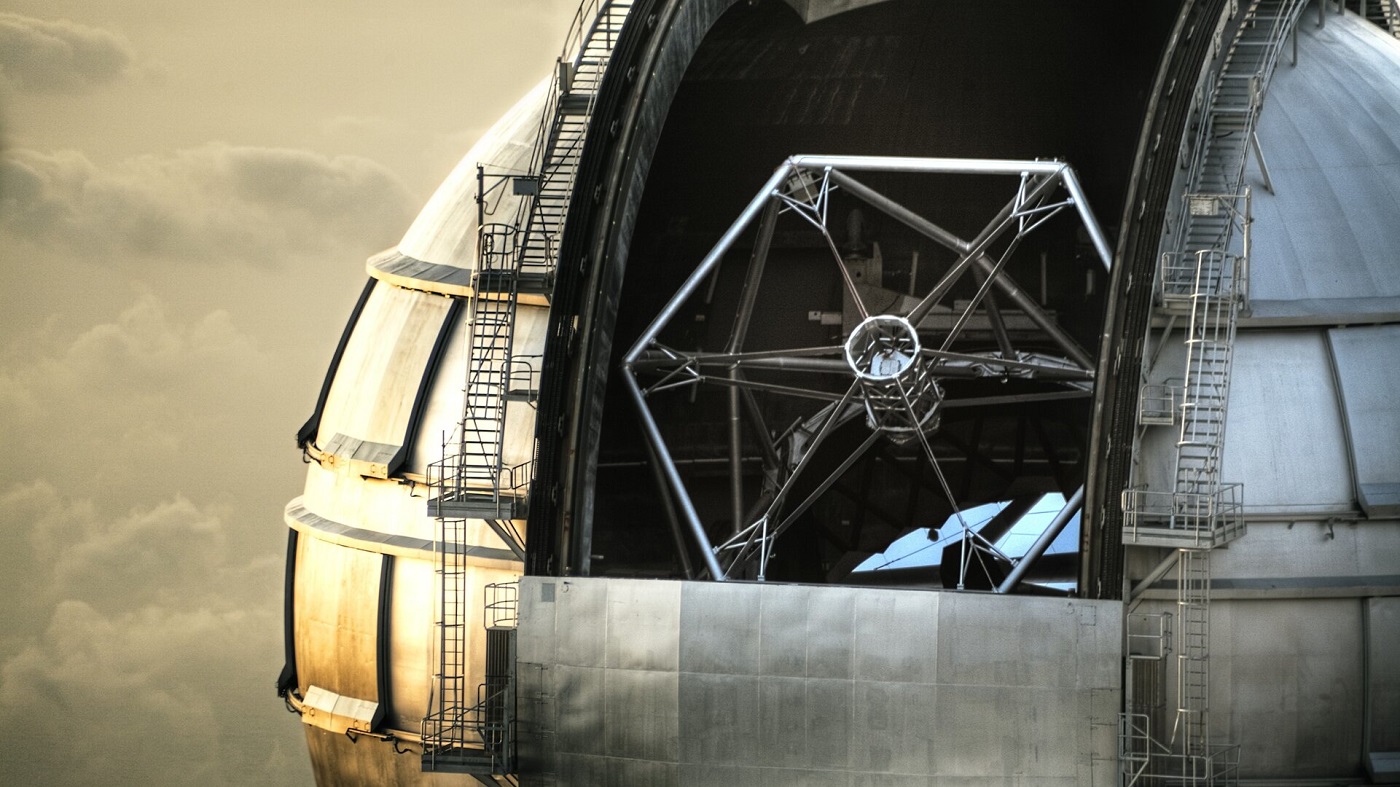
Image 1. Gran Telescopio Canarias telescope with the dome open.
Credit: Instituto de Astrofìsica de Canarias (IAC).
Protecting each segment from optical aberrations
The exceptional performance of the GTC is enabled by both its inherent design and its strategic location at the Roque de los Muchachos Observatory in La Palma, Canary Island, renowned as one of the top astronomical sites in the Northern Hemisphere. Since 2009, when the first scientific observations began, the GTC has been instrumental in advancing our understanding of fundamental astrophysical phenomena, including black holes, exoplanets, dark matter, and the origins of the universe.
Traditionally, the sensors used in technical instruments for telescopes are CCDs, however, when the GTC team designed new focal stations, they decided to adopt a different paradigm: three additional focal stations, one Cassegrain and two Folded-Cassegrain, each of them using a single technical instrument much simpler than the ones used in Nasmyth foci.
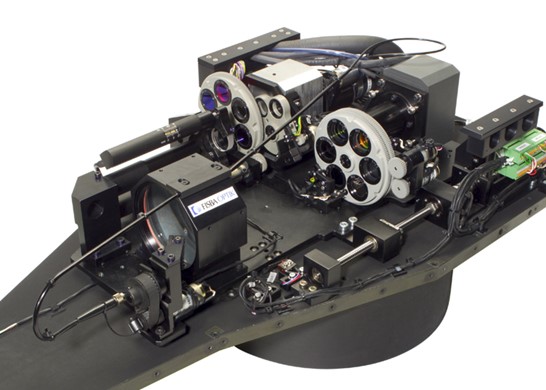
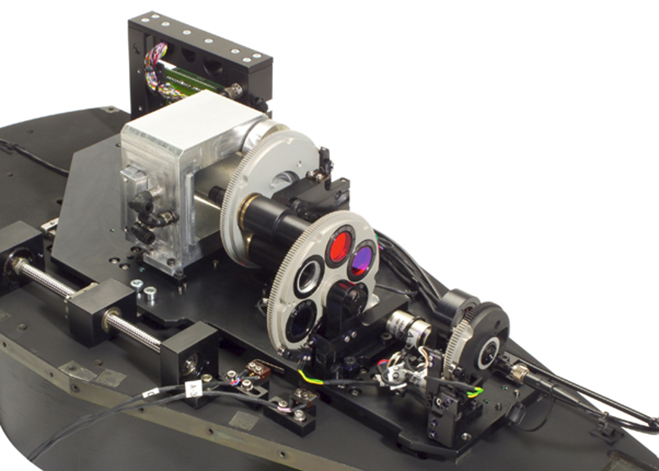
View of the three previous instruments at Nasmyth focal stations using CCDs.
The technical instrument is a wide field of view low-order Shack-Hartmann wavefront sensor, sampling a Ø20 arcsec field of view across 18 pupil sub-apertures on 1024 × 1024 pixels of an sCMOS camera. This configuration permits simultaneous slow and fast guiding at speeds of up to 200 fps alongside wavefront sensing to feed the closed-loop active optics. Additionally, the field of view is big enough to perform field acquisition since the blind pointing error of GTC is very low.
To equip these new technical instruments, the GTC team reached out to Hamamatsu Photonics, renowned for its high-speed, low-noise scientific cameras. Instead of using multiple instruments as before, the team decided to consolidate them into a single unit, using a board-level sCMOS camera from Hamamatsu. Integrated into a wider system, these sCMOS cameras are ideal due to their low maintenance and reliability.
The high sensitivity and high speed delivered by the cameras have been the crucial characteristics that have permitted the building of this robust unit within each of the new focal stations of the telescope. The result is a long-term, low-maintenance operation, enabling all technical functions essential for scientific observations, including acquisition, guiding, and precise control of telescope alignment.
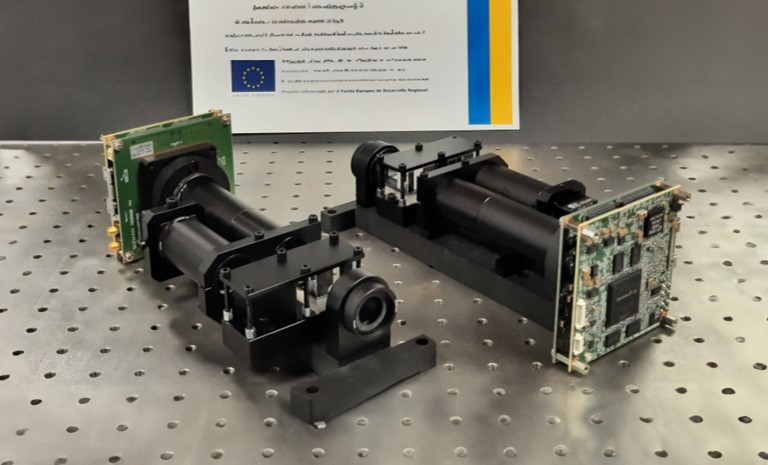
The instrument shown above is not operational and serves for size comparison only.
GTC’s many applications
GTC observes an incredible number of projects brought by scientists from all over the world. Since its creation, GTC has also been instrumental in numerous discoveries, each one captivating and mesmerizing. Among its notable achievements is the uncovering of a new ring system around a dwarf planet on the edge of the Solar System (image 2), a giant black hole at the center of the Milky Way (image 3), or the formation of the first galaxies in the universe (image 4).
Thanks to Hipercam, an ultra-fast camera installed at GTC, these rings could be detected when the material of these structures hid the brightness of the planet.
Further information here [2].
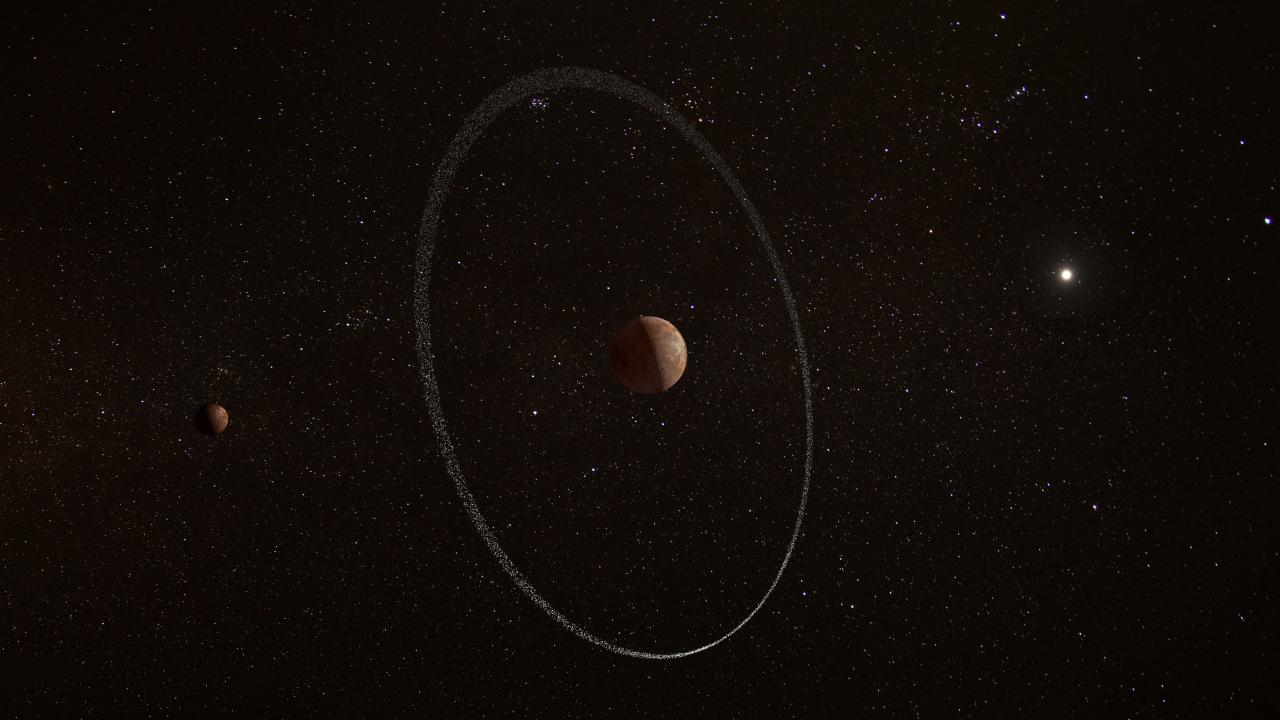
Image 2. Artist impression of the Quaoar ring system. Credit: ESA, CC BY-SA 3.0 IGO
The ring system around the dwarf planet, named Quaoar, which is approximately half the size of Pluto and orbits the Sun beyond Neptune. Rings are not usually common around small planets, and even less so far from their surface, as is the case with Quaorar. The image above shows a recreation of this ring.
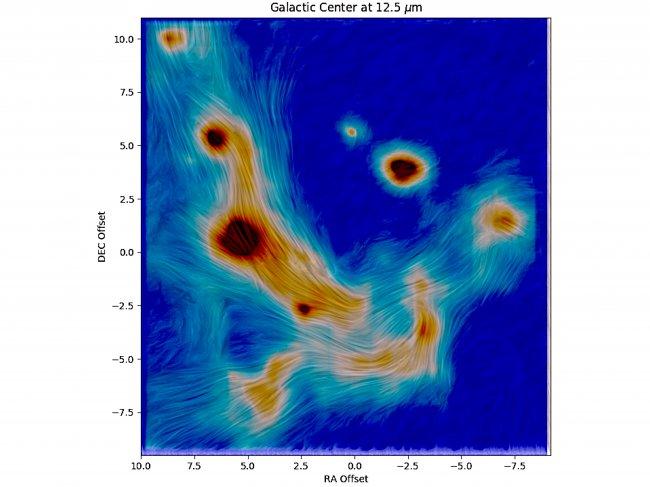
Image 3. Color scale in the image shows the amount of infrared (heat) radiation coming from warm dust particles in the filaments and luminous stars within a light year of the Galactic centre. Credit: Roche et al. 2018, MNRAS, 476, 235
Additionally, the GTC has contributed to our understanding of the cosmos by uncovering the existence of a massive black hole at the center of our Milky Way galaxy (referenced as Image 3).
Most galaxies that have been studied so far have a supermassive black hole at their centers. The one that houses our galaxy has a mass of about four million times the mass of our Sun. Sagittarius A, as this giant is called, is about 26,500 light-years from Earth, however, its observation is hindered by the amount of gas and dust along our line of sight.
However, thanks to the GTC’s infrared detection capabilities with spectroscopic, coronagraphic and polarimetric functionalities with very high spatial resolution, researchers were able to observe, for the first time, the effects of this black hole on its surrounding environment. This includes disturbances to the magnetic fields and the heating of surrounding gas and stars that surround it (see Image 3).
The color scale in the Image 3 shows the amount of infrared radiation coming from warm dust particles in the filaments and luminous stars within a light year of the Galactic Center. The polarization of the infrared light traces the magnetic field in the filaments of hot gas containing dust grains.
Further information here [3].
Moreover, the GTC has provided invaluable insights into the structure and composition of cosmic phenomena such as the Abell 370 cluster (referenced as Image 4).
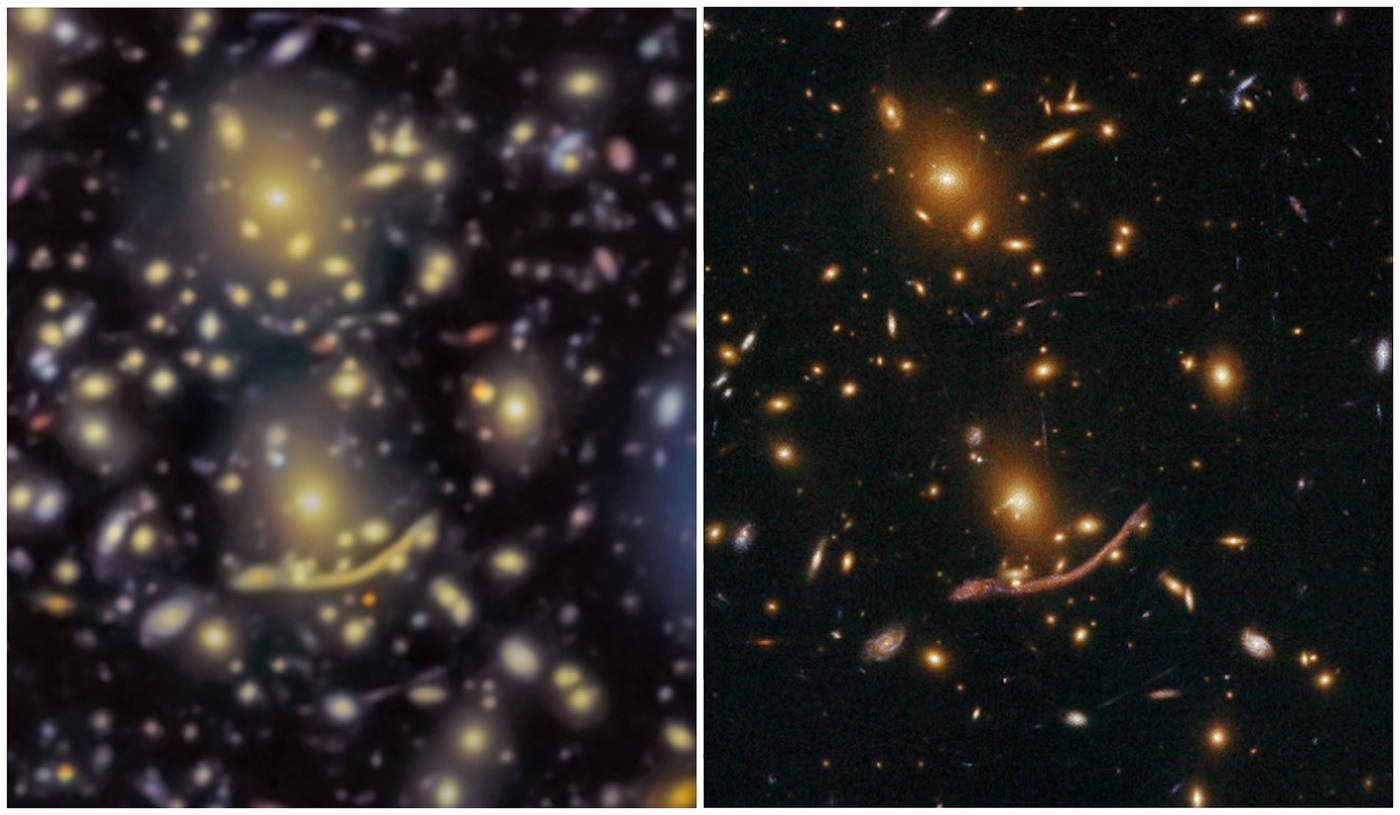
Image 4. Abell 370 cluster view from GTC+OSIRIS (left) and with the Hubble Space Telescope (HST) (right). Credit: GRANTECAN/HST.
The image above compares the centre of the cluster Abell 370 as seen with GTC+OSIRIS (left) and with the Hubble Space Telescope (HST) (right). The data from the HST have better spatial resolution because they are not affected by the turbulence in the atmosphere. However, data from GTC goes in more depth by showing the existence of some galaxies previously unknown and not detected by the HST. Abell 370 is a cluster located at a distance of about 6 million light years. Its core is made up of several hundred galaxies that act as a gravitational lens, deforming and amplifying the universe behind it, as if they were natural telescopes. In this way, astronomers can study the first galaxies, stars, and other structures that formed in the early universe, which would otherwise be too faint to detect.
Further information here [4].
Acknowledgment: The design and implementation of these new technical instruments of GTC has been financed by the European Regional Development Fund (ERDF) within the Operational Program of the Canary Islands (2014-2020).
Researcher profile

Head of Development Group at Gran Telescopio Canarias S.A.F. Javier Castro López Tarruella has spent all his professional career working on telescopes.
He joined the Instituto de Astrofísica de Canarias in 1991 to work on the proposal for an 8-10 m telescope for the Canarian observatories. Once the project was funded, he joined GRANTECAN S.A. in 1996 as head of the Optics Group for the construction of the GTC telescope. Once the construction of the GTC was completed and the operation of the telescope started, he became responsible for the new developments for the GTC. He has participated in design reviews for the next generation of telescopes as TMT and the E-ELT and has been a consultant for several companies developing telescope subsystems.
*The content presented on this page reflects information available at the time of the interview.
For further information
[1] B. Morgado et al. "A dense ring of the trans-Neptunian object Quaoar outside its Roche limit." | Nature, volume 614, pages 239–243 (2023): www.nature.com/articles/s41586-022-05629-6
[2] "El Gran Telescopio Canarias juega un papel fundamental en el descubrimiento del anillo del planeta enano Quaoar" | Instituto de Astrofìsica de Canarias (IAC), (16/02/2023): https://www.iac.es/es/divulgacion/noticias/el-gran-telescopio-canarias-juega-un-papel-fundamental-en-el-descubrimiento-del-anillo-del-planeta
References
[3] "CanariCam studies the polarization produced by the gas and dust around the black hole at the centre of the Milky Way" | Instituto de Astro- fìsica de Canarias (IAC), (02/20/2018): https://www.iac.es/en/outreach/news/canaricam-studies-polarization-produced-gas-and-dust-around-black-hole-centre-milky-way
[4] SCIENCE COMMUNICATION AND OUTREACH UNIT, "Images from the Hubble Space Telescope and GRANTECAN help to show how the first galaxies were formed" | nstituto de Astrofìsica de Canarias(IAC), (10/21/2021): https://www.iac.es/en/outreach/news/images-hubble-space-telescope-and-grantecan-help-show-how-first-galaxies-were-formed
Other case studies
- Confirmation
-
It looks like you're in the . If this is not your location, please select the correct region or country below.
You're headed to Hamamatsu Photonics website for JP (English). If you want to view an other country's site, the optimized information will be provided by selecting options below.
In order to use this website comfortably, we use cookies. For cookie details please see our cookie policy.
- Cookie Policy
-
This website or its third-party tools use cookies, which are necessary to its functioning and required to achieve the purposes illustrated in this cookie policy. By closing the cookie warning banner, scrolling the page, clicking a link or continuing to browse otherwise, you agree to the use of cookies.
Hamamatsu uses cookies in order to enhance your experience on our website and ensure that our website functions.
You can visit this page at any time to learn more about cookies, get the most up to date information on how we use cookies and manage your cookie settings. We will not use cookies for any purpose other than the ones stated, but please note that we reserve the right to update our cookies.
1. What are cookies?
For modern websites to work according to visitor’s expectations, they need to collect certain basic information about visitors. To do this, a site will create small text files which are placed on visitor’s devices (computer or mobile) - these files are known as cookies when you access a website. Cookies are used in order to make websites function and work efficiently. Cookies are uniquely assigned to each visitor and can only be read by a web server in the domain that issued the cookie to the visitor. Cookies cannot be used to run programs or deliver viruses to a visitor’s device.
Cookies do various jobs which make the visitor’s experience of the internet much smoother and more interactive. For instance, cookies are used to remember the visitor’s preferences on sites they visit often, to remember language preference and to help navigate between pages more efficiently. Much, though not all, of the data collected is anonymous, though some of it is designed to detect browsing patterns and approximate geographical location to improve the visitor experience.
Certain type of cookies may require the data subject’s consent before storing them on the computer.
2. What are the different types of cookies?
This website uses two types of cookies:
- First party cookies. For our website, the first party cookies are controlled and maintained by Hamamatsu. No other parties have access to these cookies.
- Third party cookies. These cookies are implemented by organizations outside Hamamatsu. We do not have access to the data in these cookies, but we use these cookies to improve the overall website experience.
3. How do we use cookies?
This website uses cookies for following purposes:
- Certain cookies are necessary for our website to function. These are strictly necessary cookies and are required to enable website access, support navigation or provide relevant content. These cookies direct you to the correct region or country, and support security and ecommerce. Strictly necessary cookies also enforce your privacy preferences. Without these strictly necessary cookies, much of our website will not function.
- Analytics cookies are used to track website usage. This data enables us to improve our website usability, performance and website administration. In our analytics cookies, we do not store any personal identifying information.
- Functionality cookies. These are used to recognize you when you return to our website. This enables us to personalize our content for you, greet you by name and remember your preferences (for example, your choice of language or region).
- These cookies record your visit to our website, the pages you have visited and the links you have followed. We will use this information to make our website and the advertising displayed on it more relevant to your interests. We may also share this information with third parties for this purpose.
Cookies help us help you. Through the use of cookies, we learn what is important to our visitors and we develop and enhance website content and functionality to support your experience. Much of our website can be accessed if cookies are disabled, however certain website functions may not work. And, we believe your current and future visits will be enhanced if cookies are enabled.
4. Which cookies do we use?
There are two ways to manage cookie preferences.
- You can set your cookie preferences on your device or in your browser.
- You can set your cookie preferences at the website level.
If you don’t want to receive cookies, you can modify your browser so that it notifies you when cookies are sent to it or you can refuse cookies altogether. You can also delete cookies that have already been set.
If you wish to restrict or block web browser cookies which are set on your device then you can do this through your browser settings; the Help function within your browser should tell you how. Alternatively, you may wish to visit www.aboutcookies.org, which contains comprehensive information on how to do this on a wide variety of desktop browsers.
5. What are Internet tags and how do we use them with cookies?
Occasionally, we may use internet tags (also known as action tags, single-pixel GIFs, clear GIFs, invisible GIFs and 1-by-1 GIFs) at this site and may deploy these tags/cookies through a third-party advertising partner or a web analytical service partner which may be located and store the respective information (including your IP-address) in a foreign country. These tags/cookies are placed on both online advertisements that bring users to this site and on different pages of this site. We use this technology to measure the visitors' responses to our sites and the effectiveness of our advertising campaigns (including how many times a page is opened and which information is consulted) as well as to evaluate your use of this website. The third-party partner or the web analytical service partner may be able to collect data about visitors to our and other sites because of these internet tags/cookies, may compose reports regarding the website’s activity for us and may provide further services which are related to the use of the website and the internet. They may provide such information to other parties if there is a legal requirement that they do so, or if they hire the other parties to process information on their behalf.
If you would like more information about web tags and cookies associated with on-line advertising or to opt-out of third-party collection of this information, please visit the Network Advertising Initiative website http://www.networkadvertising.org.
6. Analytics and Advertisement Cookies
We use third-party cookies (such as Google Analytics) to track visitors on our website, to get reports about how visitors use the website and to inform, optimize and serve ads based on someone's past visits to our website.
You may opt-out of Google Analytics cookies by the websites provided by Google:
https://tools.google.com/dlpage/gaoptout?hl=en
As provided in this Privacy Policy (Article 5), you can learn more about opt-out cookies by the website provided by Network Advertising Initiative:
http://www.networkadvertising.org
We inform you that in such case you will not be able to wholly use all functions of our website.
Close





